Vehicle:
Slammers "Combat Car"
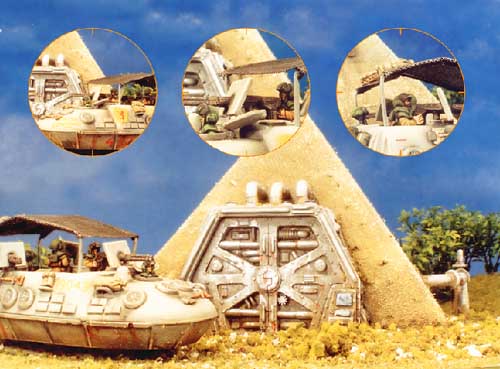
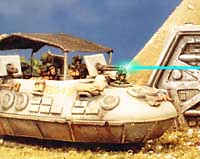
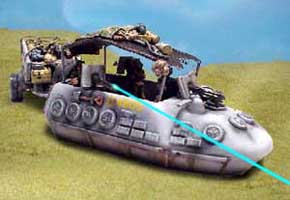
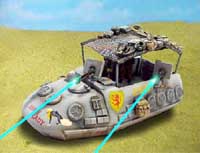
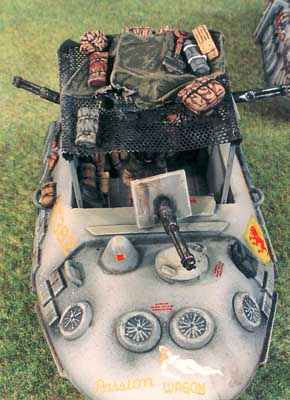
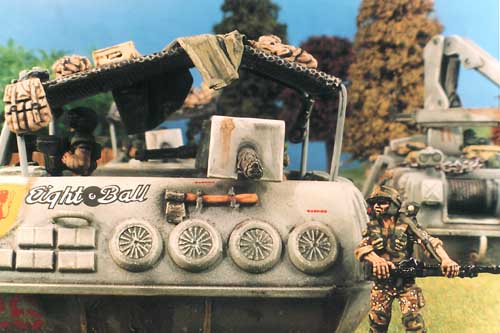
This Splinter Shield will stop shell fragments and mortar rounds or grenades, but that's all. Although this seems a poor idea at first, when viewed in context it makes sense.
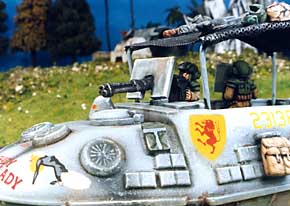
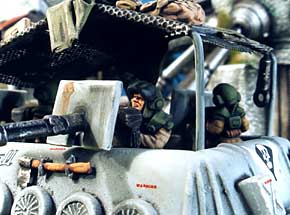
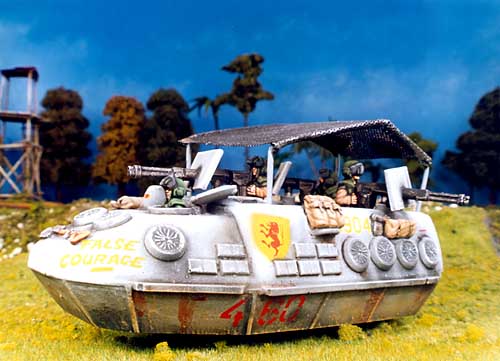
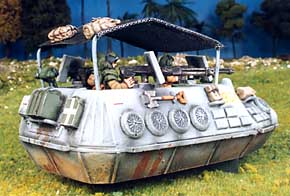
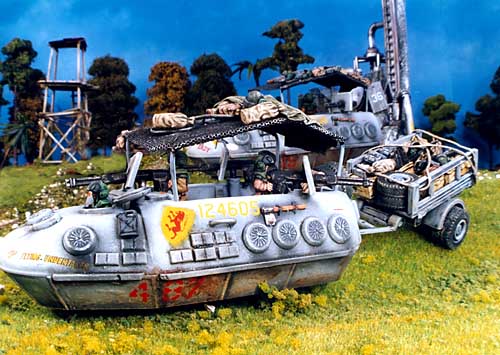
Combat Cars are "blower" style hover vehicles. They weigh 30 tonnes and
are armoured with a ceramic and iridium composite.
Like all Slammers vehicles, Combat Cars are almost always unpainted and
are definitely uncamouflaged. The Combat Car is curved in shape, like
the tank, with a blunt bow and an open back with one driver (up front
and central), followed by the fusion bottle power source and then three
gunners in the open fighting compartment at the rear.
The 7m long vehicle's overhead protection above the open fighting compartment
is afforded by the Splinter Shield - usually a Beryllium 'Fishnet' mounted
1m above the fighting compartment on steel hoops and very often full of
personal baggage. This shield will stop shell fragments and mortar rounds
or grenades, but that's all. Although this seems a poor idea at first,
when viewed in context it makes sense: Icarus have 'done their homework'.
The layout gives the three crew (with their three, gun shielded, pintel
mounted, 2cm Tri-barrels) an exceptional view with little fear of attack
from above: anything small enough or close enough to be thrown in at the
top should be stopped by the Splinter shield and anything bigger should
be knocked down by the unit's air defence. This system is only effective,
however, when used in conjunction with the other facilities offered by
a "fully featured" mercenary unit like the Slammers.
The Combat Car features strips of explosive armour for anti-personnel
and buzz-bomb point defence. Lifted by 12 smaller fans and much lighter
and a little faster than the tanks, the Combat Car can cross open water
and can raise itself on thrust alone to over a metre from the ground to
clear terrain obstacles.
The rear floor of the vehicle is usually covered in ammo boxes for the
three Tri-barrels and Gunners can use the vehicles (rather less extensive
AI unit) to slave guns to each other's control if they take crew casualties.
Combat Cars sometimes tow a wheeled trailer although this slows them down
and makes manoeuvring tricky.
This manufacturer has a package to up
grade the Combat Car which makes several changes: the mass is increased
to almost 50 tonnes through an increase in armour. The number of fans
is reduced from twelve to eight. The later fan units are "high bypass"
fans and are larger than the smaller ones they replace, advantages being
more power (to cope with the extra mass, keeping the performance about
equal), lower maintenance and quieter running. Lastly, a solid steel/iridium
sandwich splinter shield - an option on earlier models - is fitted above
the crew compartment.
A Command Car
version of this vehicle also exists with a fully enclosed rear body and
- like most military AFV's - other uses for the basic body have been formulated:
a 15cm Rocket Howitzer, ammo
haulers and other armoured transports, tank destroyers (like the Marder
and Jaeger) and others ADFV's
have been based on this chassis, though not all are in use by the regiment
but are employed by other forces.